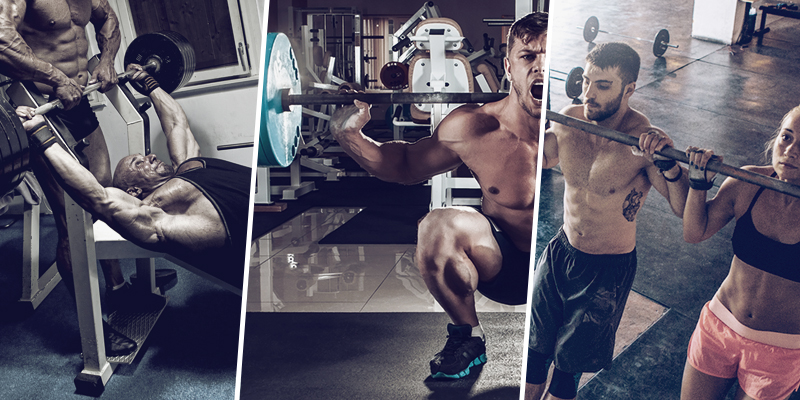Looking big, athletic or shredded is great, but as athletes, we should also be striving to have the best possible performance in whichever sport we choose. No matter the sport – be it basketball, football or any other – strength is an asset. In basketball, strength can help you finish through contact, get better position in the paint or help you get a little higher when jumping for a rebound or dunk. In football, greater strength can help you power through tackles or bring down another player with greater ease. In this article, we will tell you how to test your strength and see how you stack up!
THE EXERCISES
Watch nearly any draft combine and you will see athletes performing the bench press. The standard is to perform the exercise with 225 lbs. on the bar, and the goal is to complete as many reps as possible. Therefore, the first exercise that we recommend is the bench press. While many consider the bench press to be a chest exercise, it really is a compound movement involving the chest, arms, shoulders and core. The second exercise you should use is the squat, to test your lower body strength. The final test exercise we recommend is the wide-grip pull-up to test your pulling strength, primarily found in your back and biceps.
While using a standard weight works well in certain contexts, the varying weights of the athletes will have an impact. As a result, for the purposes of this article, we recommend that you gauge your strength in relation to your bodyweight.
THE TESTS
To test your strength, grab a workout partner to give you a spot on the bench and get to work. For the bench press, if you can complete 1 to 3 reps at your bodyweight, then you are most likely a beginner lifter or have not prioritized strength. If you can bench 1.5 times your bodyweight, then you have definitely put an emphasis on increasing your strength and have a pretty impressive bench but still have room to improve. When you hit the 2 times your bodyweight mark, then you are showing some serious strength and usually turning heads when people see you bench.
Much like the bench press, your squat strength will be measured against your bodyweight. If you can squat 1.25 times your bodyweight, then you could stand to prioritize strength training. If you’re able to squat 1.75 your bodyweight, then you are strong and have reached an acceptable level of strength but can still improve. If you can squat twice your bodyweight or more, then like with the bench, you can rest assured that are a strong individual.
Much like the bench press and squat, the pull-up test is divided into three levels – this time based on the number of reps you are able to complete at your bodyweight. If you can complete 6 to 8 strict pull-ups then you definitely train, but may not have been doing so for long. If you can complete 12 reps, then you have definitely worked on your pulling strength. Finally, if you can complete 20 reps, then your pulling strength is commendable and you may just be a rower.
See the table below for a quick guide to the three strength tests.
| Exercise | Novice | Intermediate | Advanced |
|---|---|---|---|
| Bench Press | BW x 1–3 reps | 1.5 x BW x 1–3 reps | 2 x BW x 1–3 reps |
| Squat | 1.25 x BW | 1.75 x BW | 2 x BW |
| Pull-Up | BW x 6–8 reps | BW x 12 reps | BW x 20 reps |
The values given in the article are simply a baseline. If you have reached the highest level for each test, great – keep pushing and striving to reach new goals! If you found yourself in the middle bracket, then your efforts have paid off, keep putting in the work and you will continue to grow stronger. Finally, if you were in the bottom bracket, no need to feel down. Just keep training with an emphasis on increased strength by completing lower rep sets with higher weight and the results will come. Regardless of which bracket you find yourself in for each exercise, it is important to remember that to progress you should increase your overall training volume.
BY LUC SAVEDRA
MUSCLETECH AMBASSADOR








